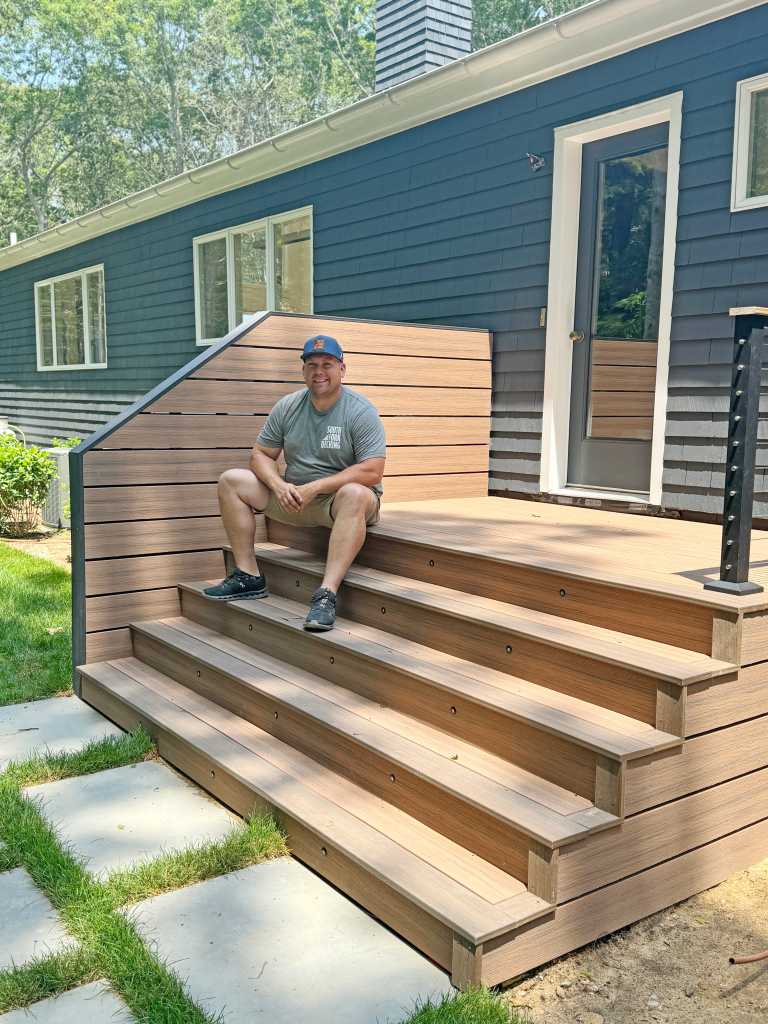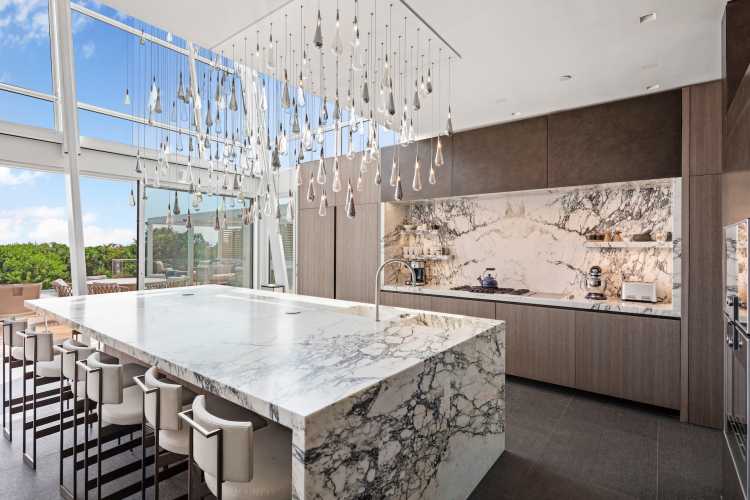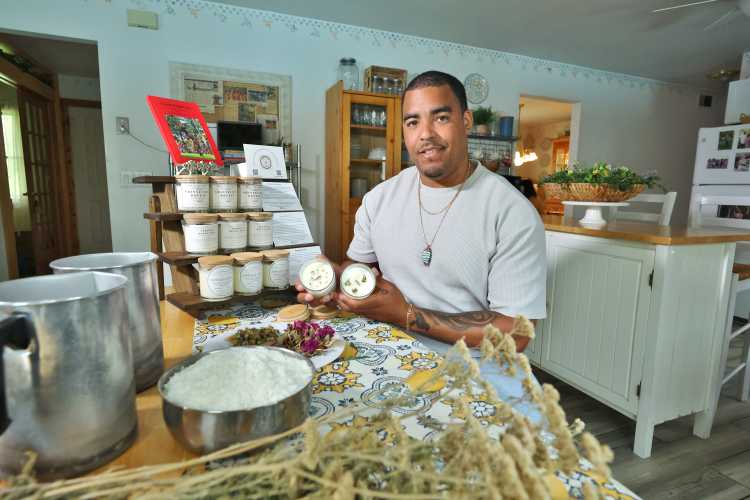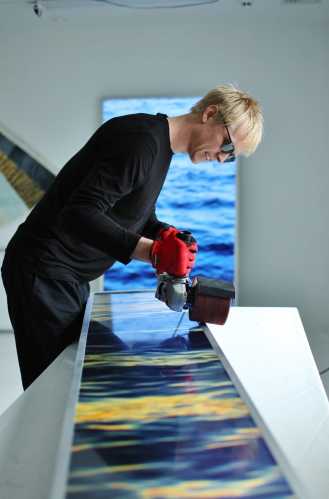Many people look at the interior of their Hamptons home as a paradise away from the city, but Randy Steyert, owner of South Fork Decking in East Hampton, believes the outdoors is the perfect place to build your oasis.
“People love the Hamptons. You’re away from the big city feel. You can go and sit outside. Everyone should have a gorgeous space outside that attaches to their home,” he says. “They can bring their guests outside, have a drink or a cup of coffee, or watch the kids in the yard.”
While a deck to some can be a generic structure, there are more choices than ever, including new composites. A true craftsman can turn a deck into more than a stretch of outdoor floor with special features.
Although new construction often includes decks, Steyert specializes in replacing decks, designing, selecting materials, doing renderings and plans, getting permits and building with his crew.
He and his wife Sarah, South Fork Decking’s coowner, were both born and raised on the East End. “I think it’s advantageous,” she says of their background in the area.
While living in the area is one connection, Steyert is part of the community in another key way.
He serves as a Sag Harbor Village police officer, even rescuing a man back in 2016 from a fire on his way to work. It’s a case of building goodwill by doing good deeds in a way few ever do.
The couple’s 13-month-old baby Barrett kept Steyert awake the night before, so he stopped to get a cup of coffee in the morning at Sagtown Coffee. Steyert smelled smoke and saw flames, helping evacuate a building and knocking on an apartment door, waking and getting a man out of a soon-to-be burning structure.
“I went up the steps of the building to it to make sure no one was in the apartment,” he says. “I banged loud enough on the doors and got the guy out of the apartment that was on fire.”
While being an entrepreneur and working in law enforcement are very different, crafts and cops have something in common.
Being a police officer requires patience, persistence and the ability to find peace of mind. Carpentry does that as well, as Steyert builds what he sees as little pieces of paradise in backyards.
“I want to be hand-in-hand with the homeowner. It’s essentially new construction,” he says. “We remove what’s there and replace it with our design.”
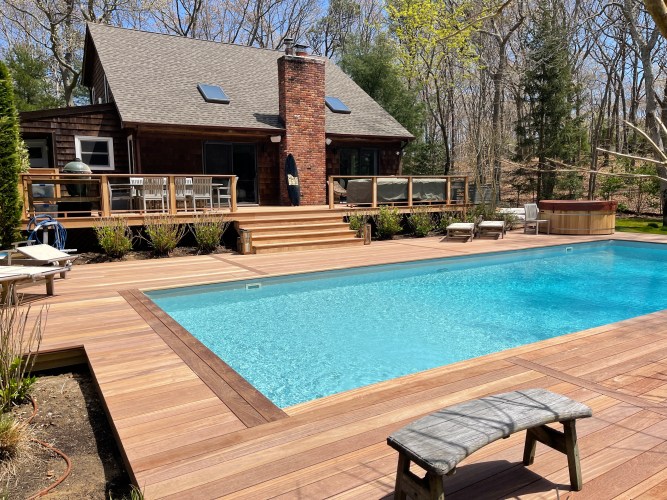
Hampton Village. The pool deck was made with a panel system, designed to accommodate a hot tub
on the far end.Courtesy of South Fork Decking
Learning the Craft
Steyert has been doing carpentry most of his life, starting with his two uncles, who have been doing carpentry for 45 years. As a young man, he framed garages, created roofing, porches and custom cabinets.
His uncle Michael Halliday, he says, gave him his first carpentry lesson, holding up his hands and saying each had five fingers. To keep them, his uncle said, he had to listen and respect his tools.
“You have to stay focused on what we’re doing,” Steyert recalls his uncle telling him.
He says he was always interested in architecture, initially doing a wide range of carpentry, but not as a profession. He worked as a New York City police officer in central Harlem and Central Park for nearly four years.
While he was working for the NYPD, the then-Sag Harbor police chief asked if he would be interested in working in the village. He saw a new future where he could build on his passion both in the public and private sector.
He changed police departments and his carpentry business was soon born. Five years ago, he refaced a 110-square-foot deck on his first job for hire. He has since built many East End decks, including one 2,200 square feet. “Everything comes back to flow and function of the deck,” Steyert says.
He’s able to be a police officer and run a business, in part due to scheduling. He works rotating shifts for Sag Harbor, primarily afternoons and nights.
His wife handles the day-to-day operations, including ordering and scheduling workers.
“It functions well,” he says. “I have enough time to not be pulled between either.”
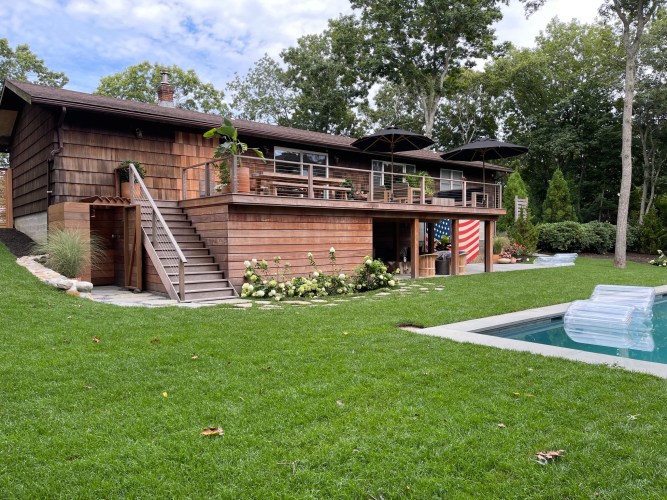
television for summer lounging.Courtesy of South Fork Decking
Material Difference
Steyert says the industry is changing, requiring craftspeople to stay current with technology.
Composites are catching on, providing longer-lasting surfaces, although not necessarily with the same individuality and shades as wood. “The big thing with decks is framing material,” he says.
“They make framing material out of composite lumber four to five times the cost of normal wood.”
The first question is whether to build out of wood (and which wood) or composites. Many opt for mineral-based composites that look like wood. Steyert says about 70 percent of his decks are wood, such as ipe and mahogany, and 30 percent are synthetic.
“We want to put our best foot forward from craftsmanship to product,” he says. “Everyone has their preference.”
Some want decks to flow with the house, which can lead to wood. Others want a baby to crawl safely, with no splinters, on a deck that doesn’t change colors, leading to composites.
Steyert likes working with Deckorators, a mineral-based composite mixing PVC and sandstone with a 50-year guarantee. He believes Deckorators regulate heat better than other synthetic decks.
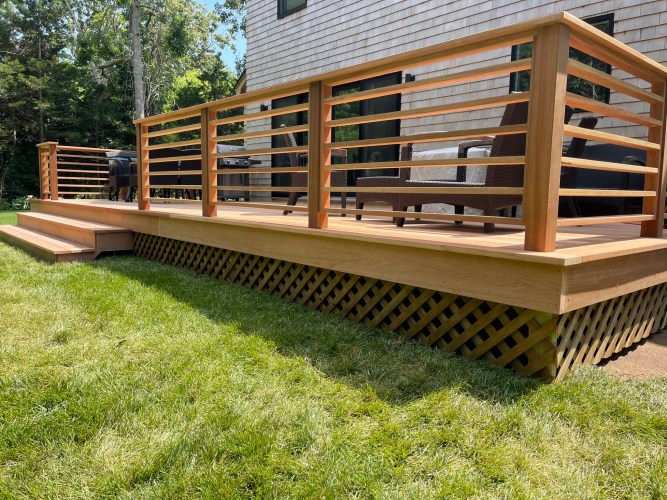
railing makes the outdoor space on this East Hampton home really stand out.Courtesy of South Fork Decking
Way of the Wood
Steyert says many residents want mahogany or ipe, an expensive ironwood, although he avoids cedar, which he says doesn’t last as long. “When you do a wood deck, the biggest problem is higher levels of moisture or sun,” he says. “You get different tones and colors.”
He builds with board breaks in which planks meet in a line. He puts a perpendicular board at the ends of one group before the start of the next. “It keeps everything uniform,” he says. “When you use a synthetic material, it looks amazing. When you use wood, you alleviate the point where most of the rot happens.”
He often builds rain escape systems to waterproof beneath wood decks, channeling water to a gutter. They use a Camo hidden fastener system to leave no holes on top of decks and joist tape to waterproof framing.
“It’s a rubberized tape that creates a barrier that water can’t penetrate,” he says. “If I put a screw through it, it adheres to the screw, so it’s still watertight.”
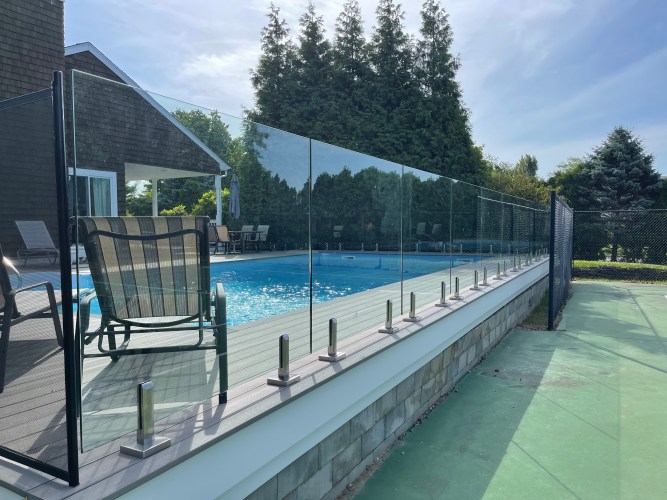
pool without making it feel enclosed, while a Timbertech Azek Coastline decking surrounds the pool.Courtesy of South Fork Decking
Deck Design
Decks have to be designed to meet code, for performance, aesthetics and use. He starts with a conversation with homeowners about what they want to do with the space.
“You don’t want a deck design where a railing or steps clutter where you put the table,” Steyert says.
“You don’t want to put outdoor seating and a couch right next to the exit from the house.”
He says it’s important to keep in mind the “function and flow” of a design, providing safety, comfort and ease. “Everything has a tweak to it,” Sarah says.
“It’s a unique, custom project that makes the house more elevated.”
Steyert likes glass inlaid railings with glass panels that give a clear, seamless view from the house.
He also likes cable railings with horizontal cables. “I think it’s easier on the eyes,” he says. “When you look out onto the deck, it makes for a cleaner line of vision.
And I think it adds a modern line to your deck.”
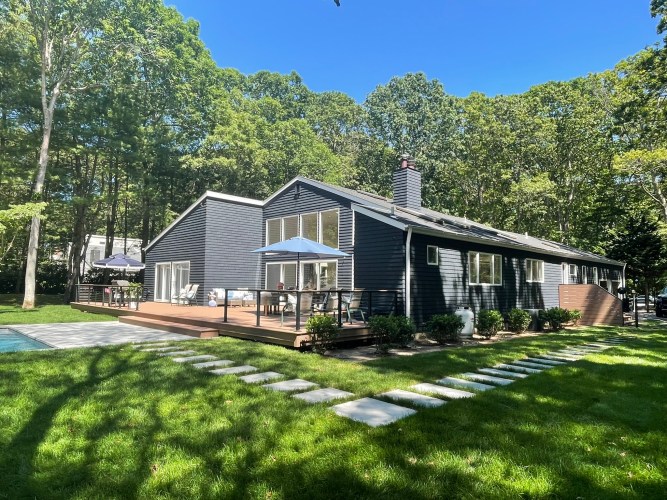
East Hampton house, where South Fork Decking also worked on the bluestone patio and the walkway
that connect the front porch to the back deck.Courtesy of South Fork Decking
Features
Some decks include built-in hot tubs or seating, while others are designed for relaxing and eating.
Framing for outdoor kitchens must support the additional weight, plus electrical, water and gas. “It does consume a section of your deck,” he says. “You have a fixed object built into it.”
Pergolas provide shade and shelter from the sun. And decks around pools are a world of their own. “Pool code changes everything,” he says. “You have to be on top of how the property is enclosed for pool code.”
He says Deckorators isn’t slippery and stays cooler than typical materials, ideal for surrounding pools. They also design and build outdoor showers that blend into decks.
Although they sometimes build in benches, he says these days people generally want to install outdoor furniture.
They also install lights on decks, providing safety and ease of use at night. “We love adding lights to our decks,” he says. “A little highlight on the steps can elevate a project.”
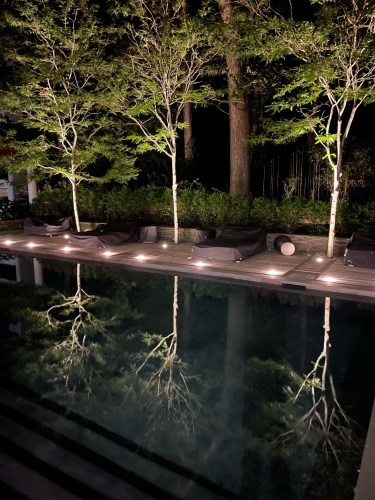
lights hidden in the decking illuminate the trees and walkway.Courtesy of South Fork Decking
Beyond Decks
As more people work from home, they are adding a work component to some construction. They recently built a woodworking shop and deck for a woodworker who moved to Amagansett. And they built an office on a deck for a Northwest Woods resident.
“She didn’t want to sit at a desk in a room, so we built an outdoor office with a privacy wall,” Sarah says. “Those projects are cool for us. We get to work with someone to make their job easier.”
Steyert loves the craft, but also the concept of improving people’s lives, expanding their world and opening up the outdoors for them. He enjoys working with his hands and the process from meeting with people to woodworking. “I’ve been doing carpentry my whole life,” he says, noting he is attentive to details. “We hand select everything. We don’t just order and use what shows up. We pick out the pieces we want.”
While they specialize in decks, other things lately also are in the cards for his company. They are going beyond decks, recently managing a project including a renovated pool, patio, 100-foot walkway, exterior paint job and two decks.
Most residents upgrade their outdoors for themselves, but some seek to boost rental value, he says. Either way, Steyert sees decks as turning the outdoors into an oasis. “With decking, you’re bringing something to life,” he says. “The best part about it is when the family comes out and uses that space.”
He remembers one family who for the first time in more than a decade got together for a big barbecue at a house where he had just built a deck. “Other clients send me pictures of them playing with their kids on the deck,” he says.
This article appeared in the Behind The Hedges Fourth of July issue in Dan’s Papers. Read the full digital edition here.
Email tvecsey@danspapers.com with further comments, questions or tips. Follow Behind The Hedges on Instagram and X.

